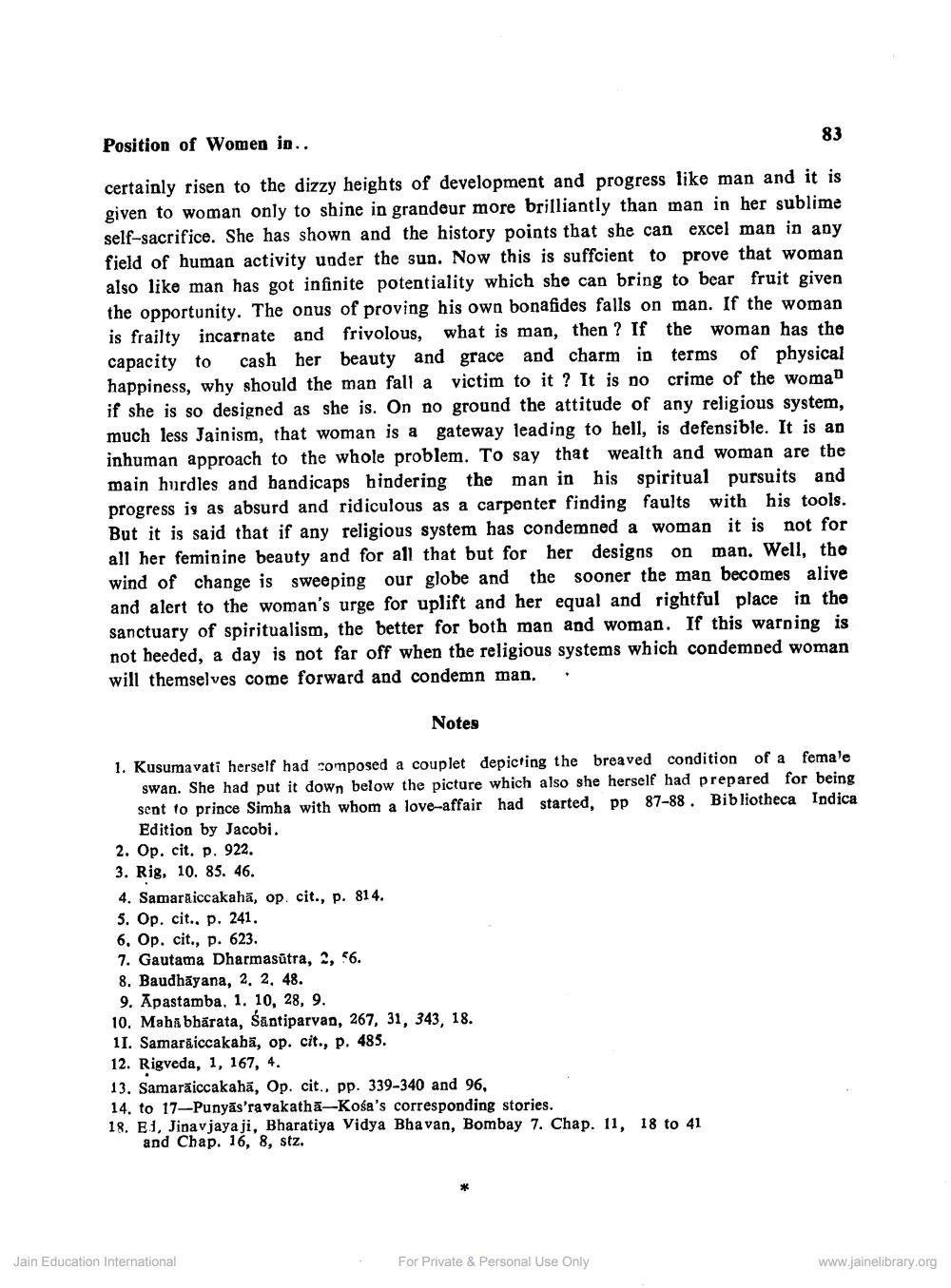________________
Position of Women in..
83
certainly risen to the dizzy heights of development and progress like man and it is given to woman only to shine in grandeur more brilliantly than man in her sublime self-sacrifice. She has shown and the history points that she can excel man in any field of human activity under the sun. Now this is suffcient to prove that woman also like man has got infinite potentiality which she can bring to bear fruit given. the opportunity. The onus of proving his own bonafides falls on man. If the woman is frailty incarnate and frivolous, what is man, then? If the woman has the capacity to cash her beauty and grace and charm in terms of physical happiness, why should the man fall a victim to it? It is no crime of the woman if she is so designed as she is. On no ground the attitude of any religious system, much less Jainism, that woman is a gateway leading to hell, is defensible. It is an inhuman approach to the whole problem. To say that wealth and woman are the main hurdles and handicaps hindering the man in his spiritual pursuits and progress is as absurd and ridiculous as a carpenter finding faults with his tools. not for But it is said that if any religious system has condemned a woman it is all her feminine beauty and for all that but for her designs on man. Well, the wind of change is sweeping our globe and the sooner the man becomes alive and alert to the woman's urge for uplift and her equal and rightful place in the sanctuary of spiritualism, the better for both man and woman. If this warning is not heeded, a day is not far off when the religious systems which condemned woman will themselves come forward and condemn man.
Notes
1. Kusumavati herself had composed a couplet depicting the breaved condition of a female swan. She had put it down below the picture which also she herself had prepared for being sent to prince Simha with whom a love-affair had started, pp 87-88. Bibliotheca Indica Edition by Jacobi.
2. Op. cit. p. 922.
3. Rig, 10. 85. 46.
4. Samaraiccakaha, op. cit., p. 814.
5. Op. cit., p. 241.
6. Op. cit., p. 623.
7. Gautama Dharmasutra, 2, 56.
8. Baudhayana, 2, 2, 48.
9. Apastamba. 1. 10, 28, 9.
10. Mahabharata, Santiparvan, 267, 31, 343, 18.
11. Samaraiccakaha, op. cit., p. 485.
12. Rigveda, 1, 167, 4.
13. Samaraiccakaha, Op. cit., pp. 339-340 and 96,
14. to 17-Punyas'ravakatha-Kosa's corresponding stories.
18. El, Jinavjayaji, Bharatiya Vidya Bhavan, Bombay 7. Chap. 11, 18 to 41 and Chap. 16, 8, stz.
Jain Education International
For Private & Personal Use Only
www.jainelibrary.org




